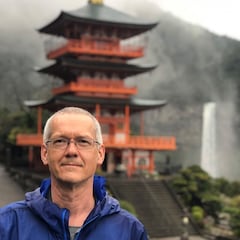A 5-Day Pilgrimage on the Kumano Kodo Nakahechi Route
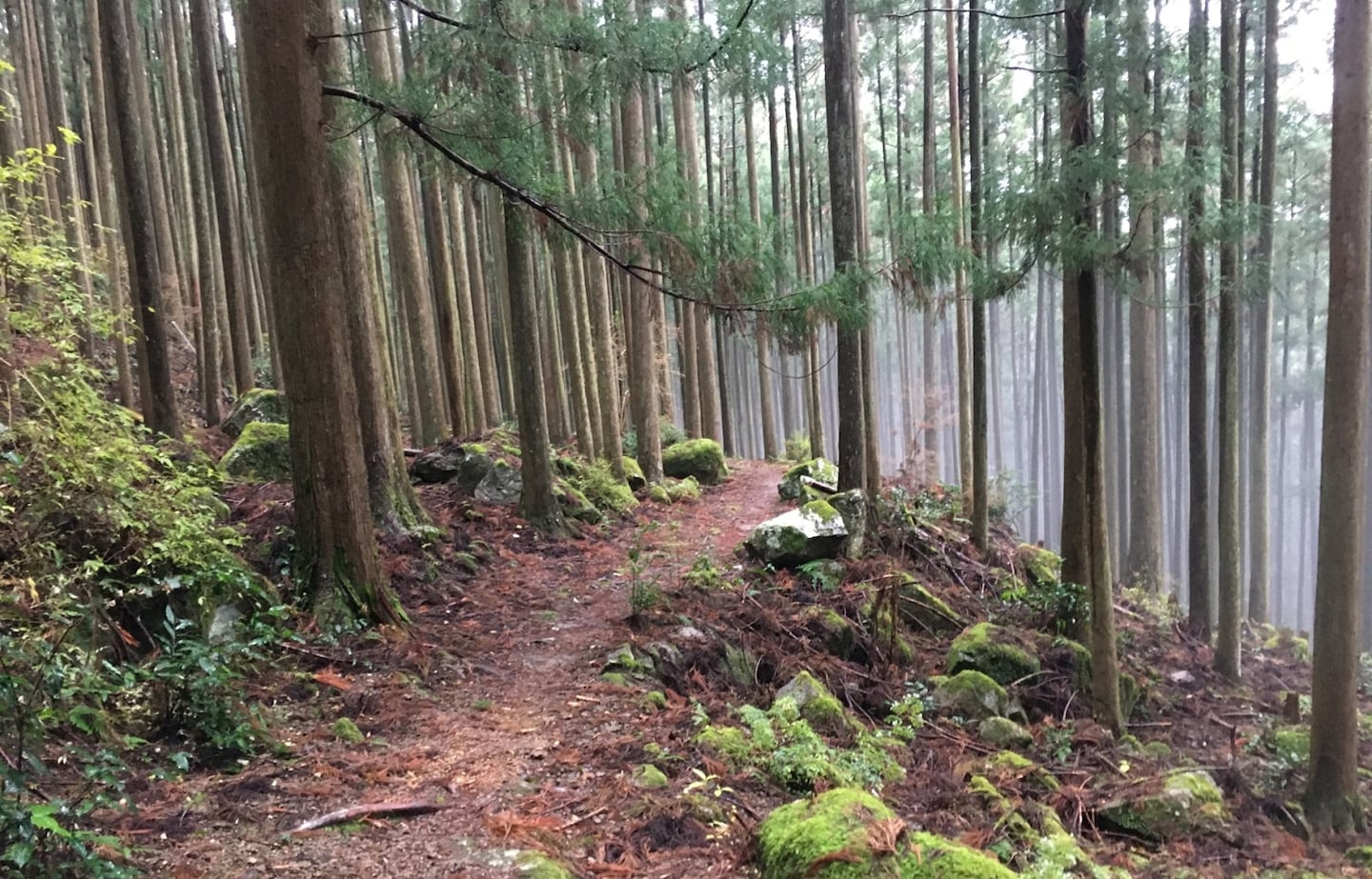
Centered around the three grand shrines of Kumano, the Kumano Kodo is a magical series of pilgrimage trails with a history of over 1000 years that passes through the heavily-forested Kii Mountains in the Kansai region. John Rucynski guides you on a five-day journey on the popular Nakahechi route.
By John Rucynski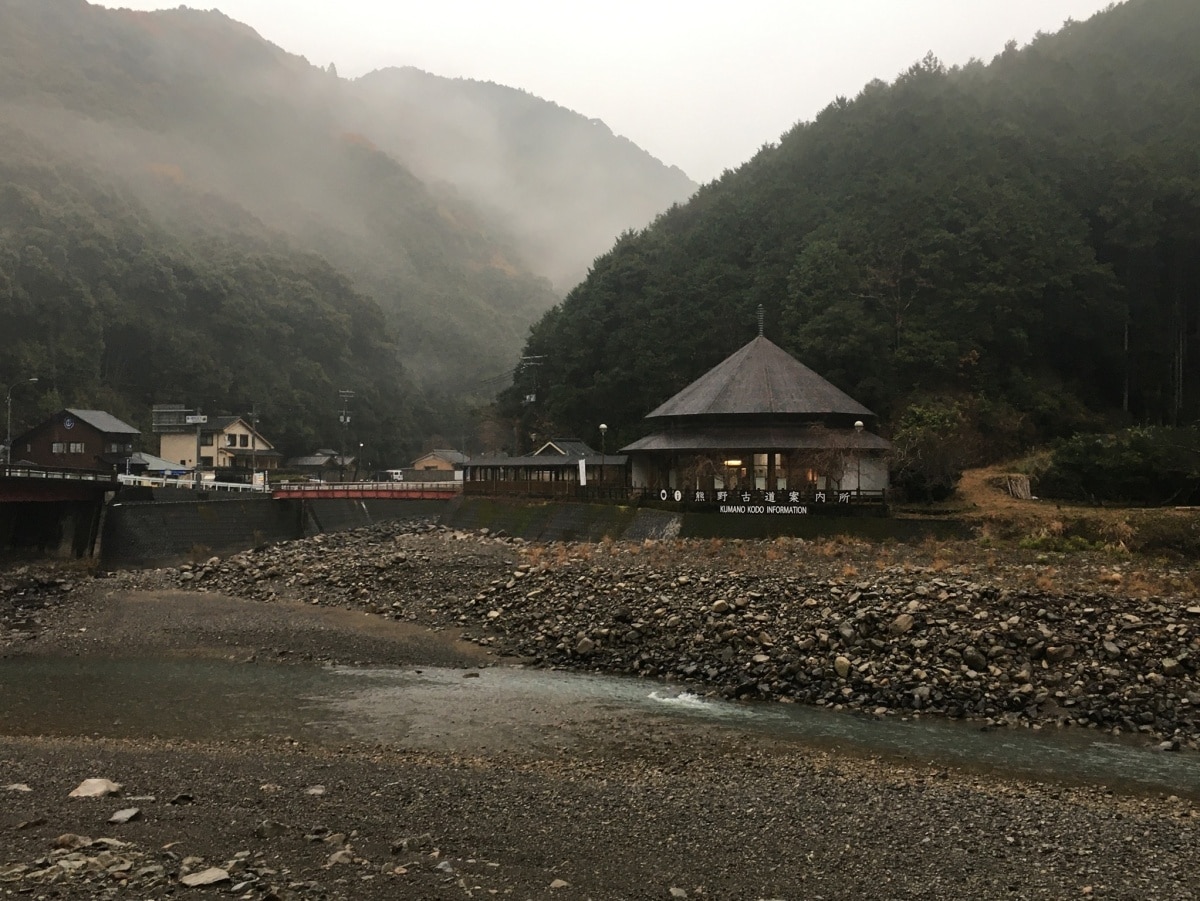
Your pilgrimage starts in Takijiri, about 40 minutes by bus from JR Kii-Tanabe Station. (All photos provided by John Rucynski)
July of this year marks the 20th anniversary of “Sacred Sites and Pilgrimage Routes in the Kii Mountain Range” being awarded UNESCO World Heritage status. Covering a vast area spread over the prefectures of Wakayama, Nara, and Mie in the Kii Peninsula, the designation focuses on the sacred sites of Yoshino & Omine, Koyasan, and the Kumano Sanzan (three grand shrines of Kumano). The Kumano Kodo joined Spain’s Camino de Santiago as the only UNESCO-listed pilgrimage routes in the world.
Among the various Kumano Kodo pilgrimage trails, the most popular and accessible is the classic Nakahechi route in Wakayama Prefecture. The five-day trek described here is a serene and spiritual journey that passes through two of the three grand shrines of Kumano. Completing this long and undulating course requires a reasonable level of fitness, but the weary pilgrim will be amply rewarded with stunning natural scenery, long soaks in local onsen (hot springs), and various culinary delights.
Kumano Sanzan Information
Day 1: Takijiri to Takahara

It is worth spending the first night in the settlement of Takahara. Takahara is also known as Kiri-no-Sato (“Village in the Mist”) and offers exquisite views of the valley below.
As you get off the bus at the Takijiri stop, you will see the Kumano Kodo Kan Pilgrimage Center just across the river. This information center offers bilingual exhibits on the Kumano Kodo, as well as a small selection of outdoor goods and souvenirs. Just across the street is the starting point of your five-day pilgrimage. During your trek, you will encounter numerous oji, or small subsidiary shrines of the Kumano Sanzan. After checking out the first of these, Takijiri-oji, it’s time to hit the trail with the short but steep ascent to Takahara.
Although the first day of this itinerary involves only about four kilometers of hiking, there are two very good reasons for staying in Takahara. First, this initial climb is one of the steepest sections of the entire course, so knocking it off will help you get your trail legs and make for an easier second day. Second, Takahara is a charming settlement which offers wonderful views and several fantastic inns.
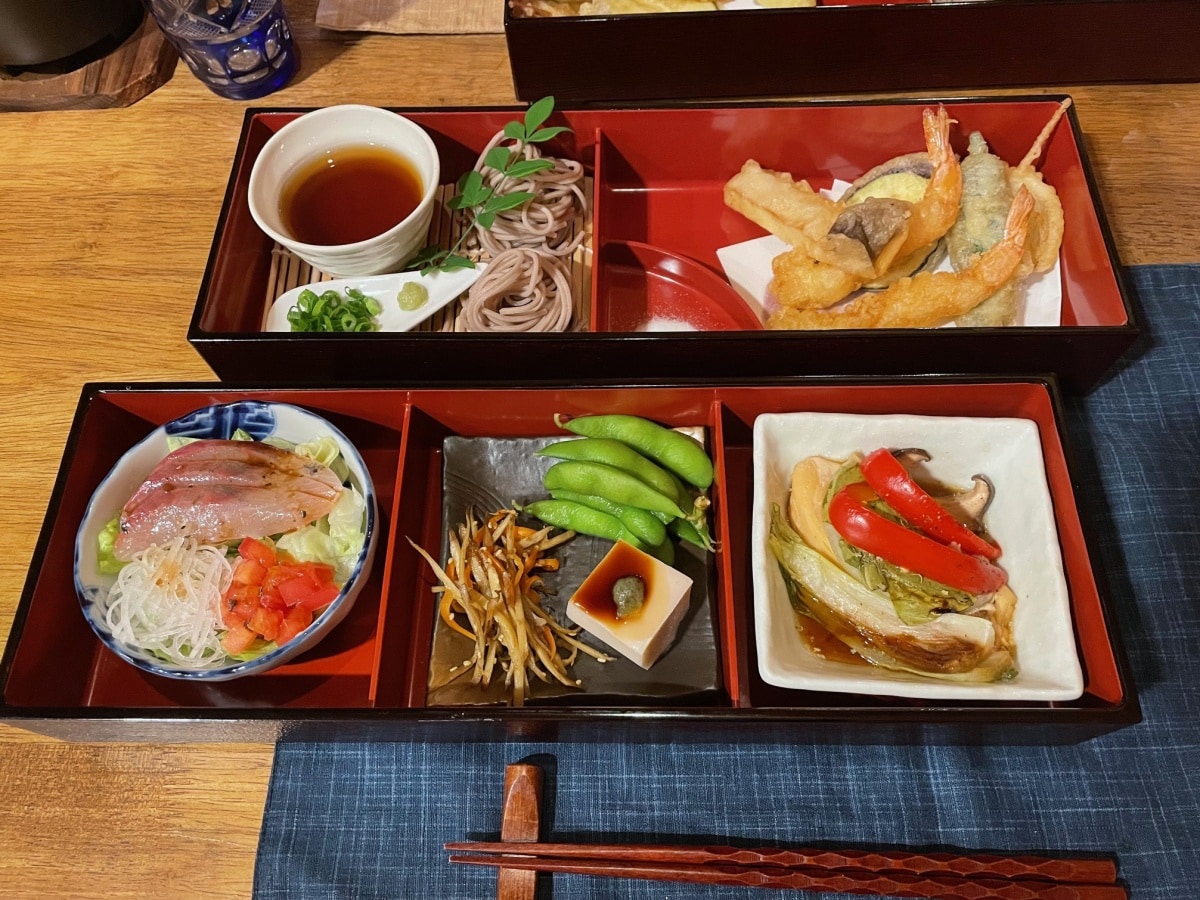
A portion of a gorgeous Kumano Kodo inn meal, including sashimi, soba, and tempura.
Long-distance hikers who are used to subsisting on energy bars and freeze-dried meals will be in for a very pleasant surprise as they sit down for their first dinner. Lodges along the trail offer nutritious and filling restaurant-quality meals, making the most of local ingredients. In addition to dinner and breakfast, most inns also offer an option for a bento (small packed lunch) for the next day’s hike.
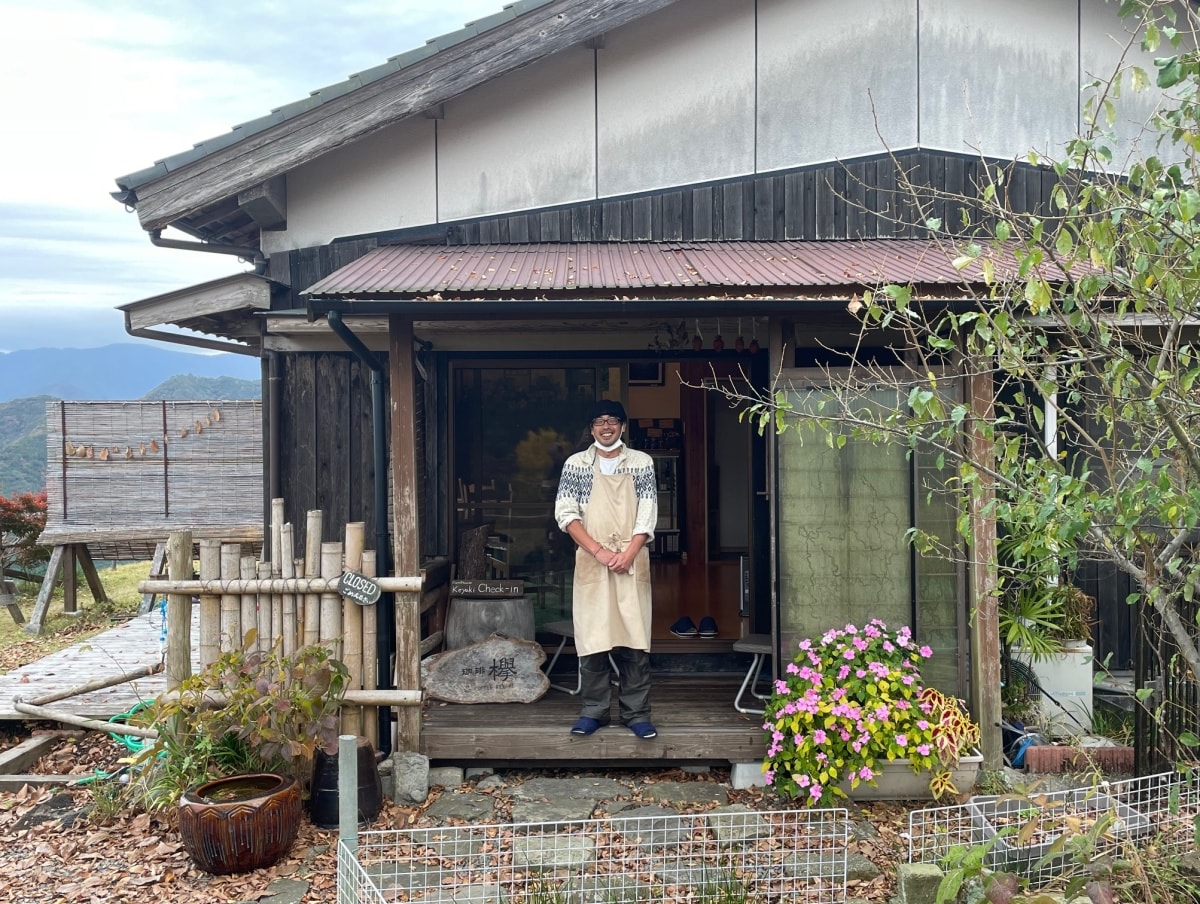
The friendly proprietor of Keyaki seeing us off after a night at his guesthouse.
Day 2: Takahara to Nonaka
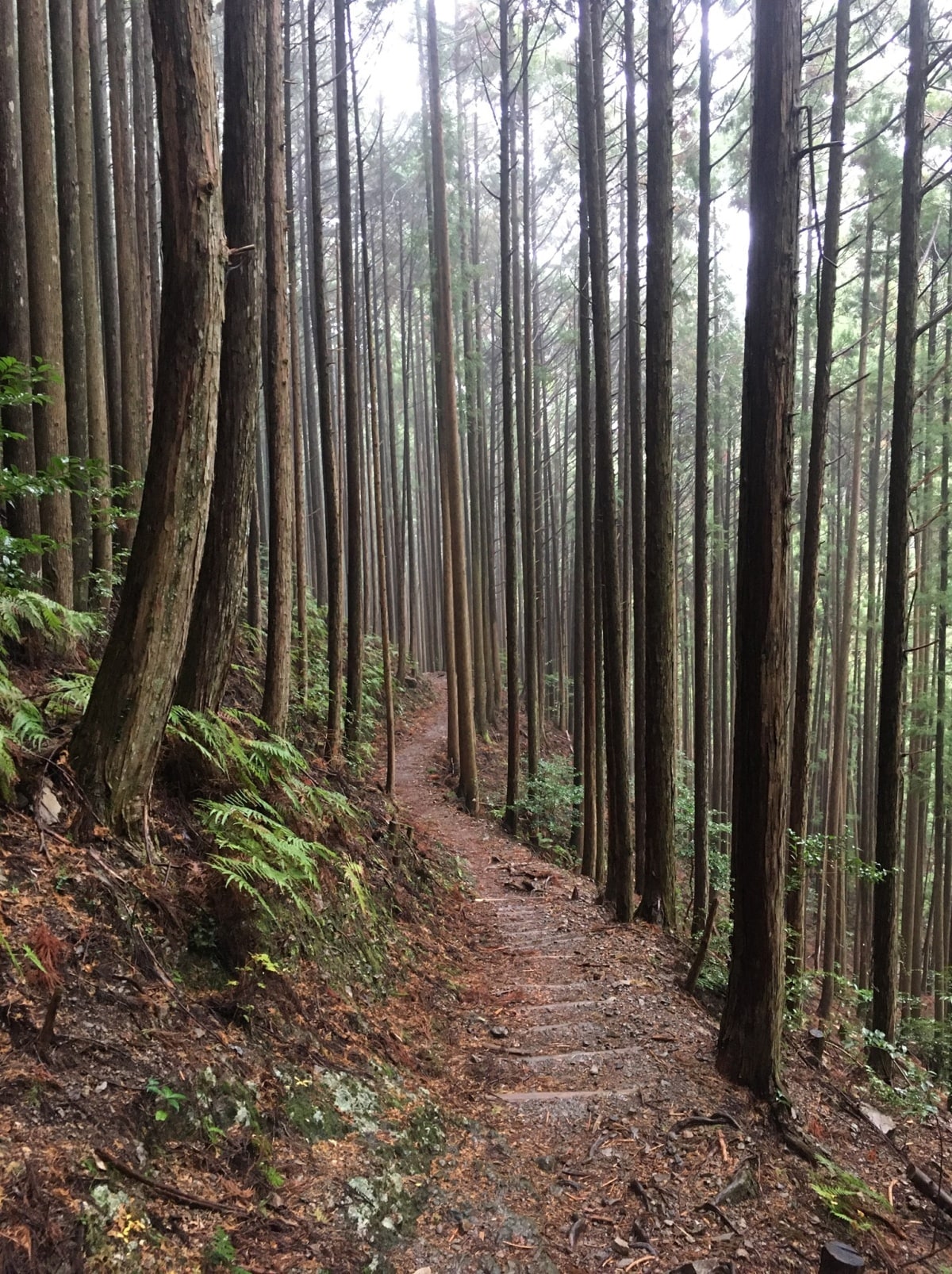
For many sections of the course, you can enjoy walking between a sea of towering cedar and cypress trees.
The first full day of hiking involves roughly 13 kilometers of undulating trail that includes over 800 meters of elevation gain, along with 650 meters of elevation loss. The terrain varies between earthen trail (watch out for rocks and roots) and paved roads as you pass through quaint villages. If you haven’t opted for a bento, this is a rare day that offers lunch spots along the way. Close to 10 kilometers into your walk, you’ll come across a michi no eki (literally “roadside station”). A ubiquitous feature of travel in rural Japan, these rest stops offer local produce, vending machines, public restrooms, and often a sit-down restaurant (in this case on tatami mats), serving staples such as curry and rice and oyakodon, a rice bowl dish with chicken, egg, and scallions. Takeout options at this one include mehari-zushi (flavored sushi rice wrapped in mustard leaves), a delicacy of the Kumano region that you should sample at least once during your journey.
After a short walk, you will reach Chikatsuyu, a scenic village of about 450 people that sits next to the Hiki River. If time allows, check out the Kumano Kodo Nakahechi Museum of Art, which features work by local painters. Cabelo Coffee makes a wonderful pitstop if you need a caffeine boost before the last leg of the day’s walk. If you cannot secure accommodation in Nonaka, there are also a few inns in Chikatsuyu.
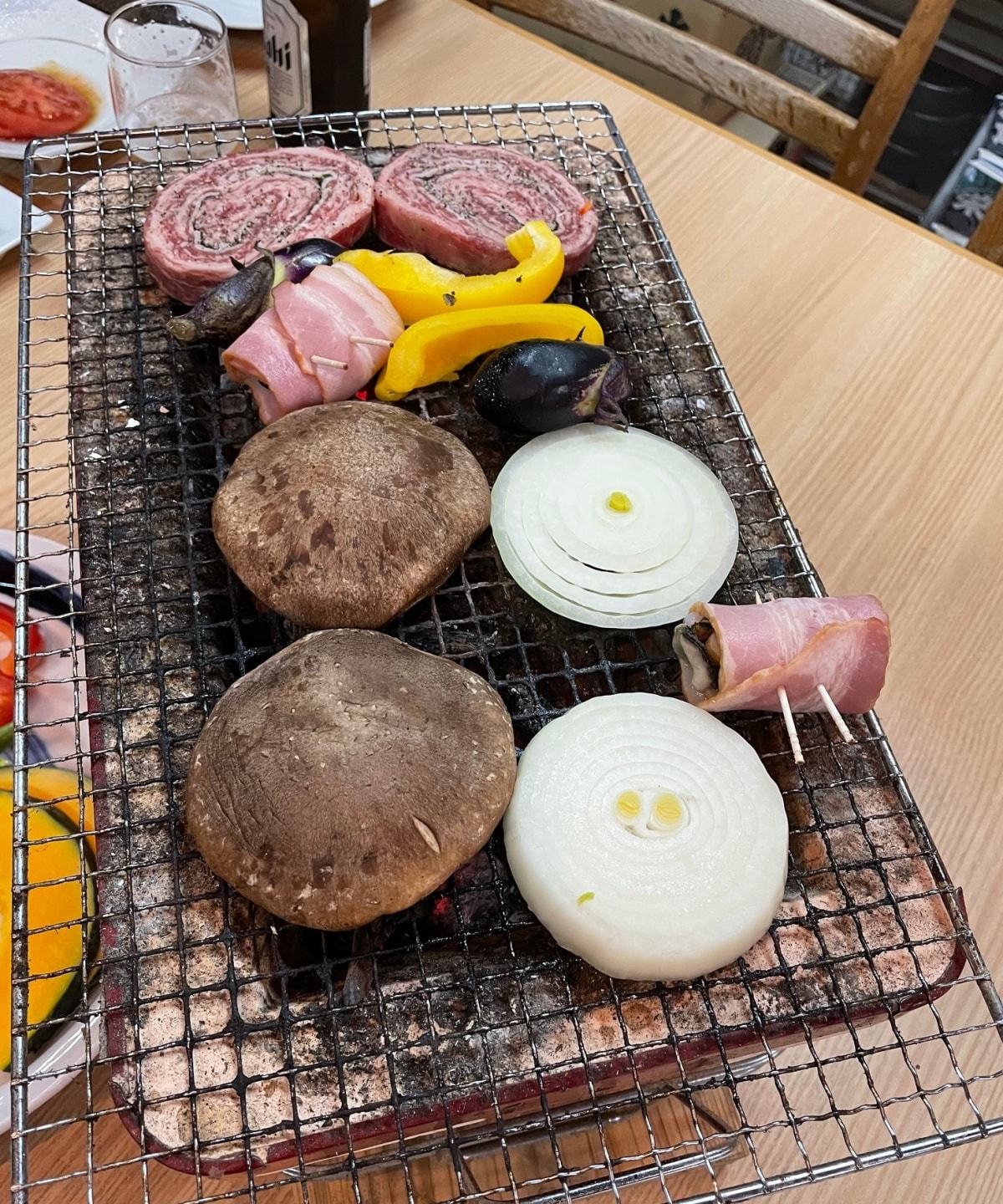
A filling dinner of grilled meat, seafood, and veggies at Kumano Kodo Inn Hagi, just one of several fantastic inns to choose from in Nonaka.
Shortly before reaching your accommodation for the night you will find Tsugizakura-oji, another subsidiary shrine. If you have enough power left in your legs, take the steep but short climb surrounded by 800-year-old cedar trees. Also be sure to take the walk down to Nonaka-no-Shimizu, a natural spring with potable water, to refill your water bottle. Nonaka has about half-a-dozen wonderful inns, so you can eat and rest well before the very long third day.
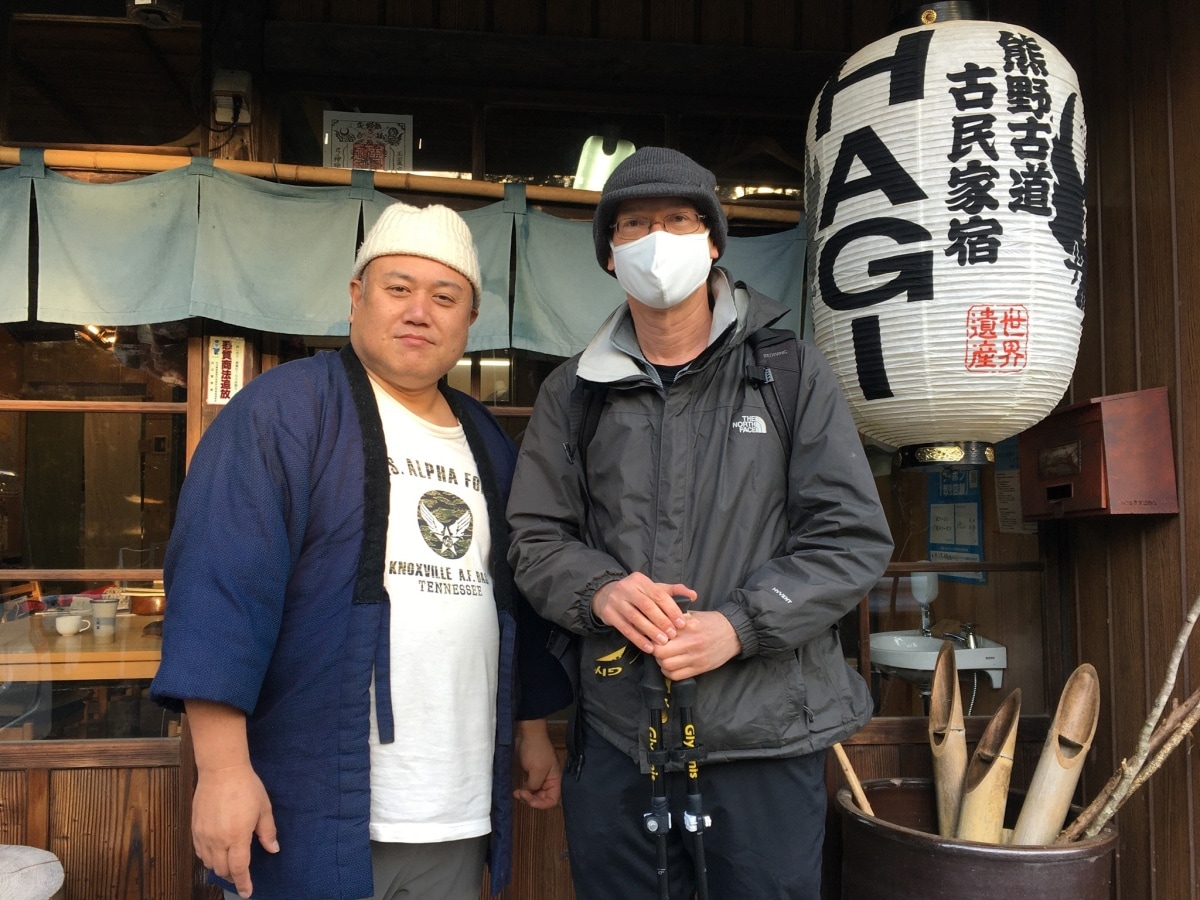
Being seen off by another friendly local inn owner before embarking on the longest day of the walk.
Day 3: Nonaka to Hongu and Yunomine Onsen

A rare snowfall on the Nakahechi course. Although the Nakahechi can be hiked year-round, snow, ice, or rain makes the cobblestone sections in particular quite slippery, so proper hiking boots with good traction and trekking poles are recommended.
Day 3 is the longest day, as you will cover over 21 kilometers while ascending nearly 1000 meters and descending over 1400 meters. As with every other day on the trail, however, it will all be more than worth it. After climbing up and down through deep forest for much of the day, the final 7.5 kilometers from Hosshinmon-oji to Kumano Hongu Taisha includes several sections on paved roads, but it is a pleasant walk through off-the-beaten-path Japan. Your tired legs will be revived by a final approach to the grand shrine on a cobblestone trail that will make you feel like you have been transported into a Hayao Miyazaki film.
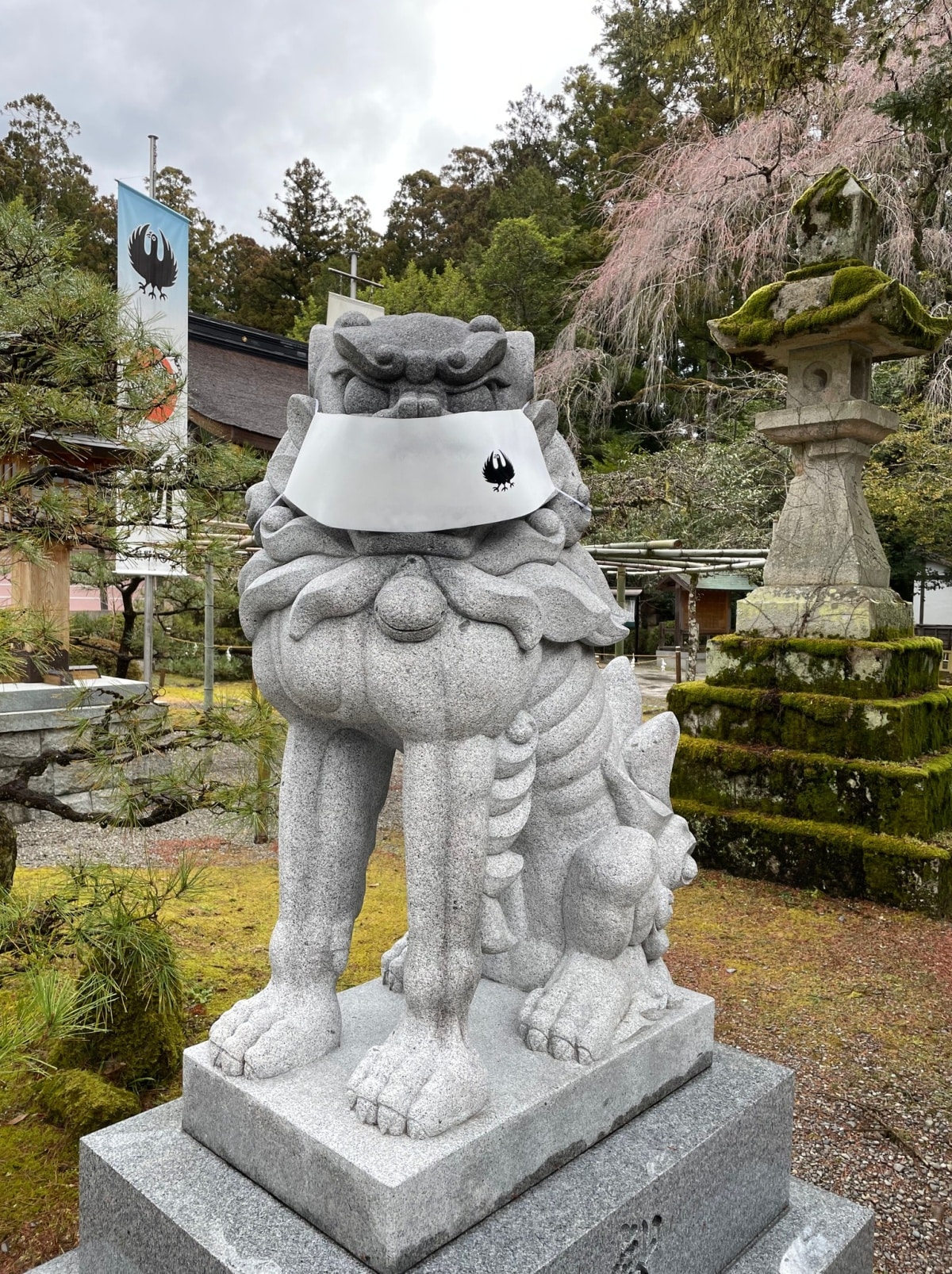
A shrine guardian dog at Kumano Hongu Taisha. The three-legged crow on the mask (Yatagarasu) is considered a guiding god in Shinto and is an important symbol of the Kumano region.
After exploring the grand shrine, head across the street to wonder at Oyunahara, a sandbank (and the original location of Kumano Hongu Taisha) with the world’s biggest torii shrine gate. As Wakayama Prefecture is the biggest producer of ume (Japanese apricot), reward yourself for your long hike with an ume soft serve ice cream from one of the shops on Hongu’s main street. You will also have another chance to sample mehari-zushi.
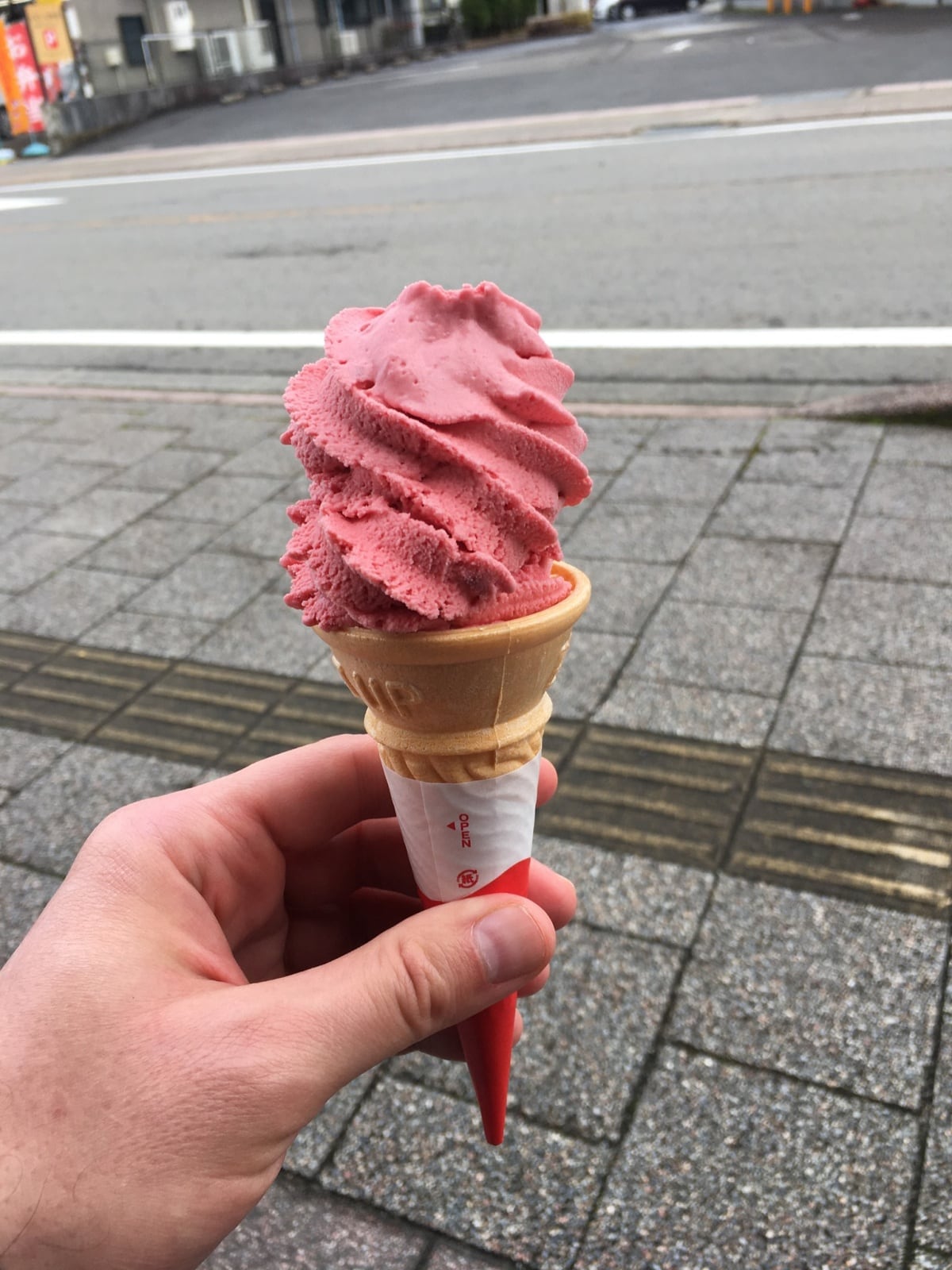
Ume (Japanese apricot) is a local soft serve ice cream flavor you shouldn’t miss out on trying.
While Hongu itself has a few accommodation options, the smart move after a hard day on the trail is to head to one of the neighboring hot spring villages (Kawayu Onsen, Wataze Onsen, or Yunomine Onsen) for a long replenishing soak. Yunomine Onsen is one of the oldest hot springs in all of Japan and also offers the biggest selection of places to stay. You can purchase eggs or vegetables to cook in a hot well along the river running through the center of the village. Yunomine Onsen can be reached from Hongu by bus (about 10 minutes) or by continuing your hike with the short (about two kilometers) but very steep Dainichi-goe trail.
Kumano Hongu Taisha HP
Yatagarasu Information
Day 4: Ukegawa to Koguchi
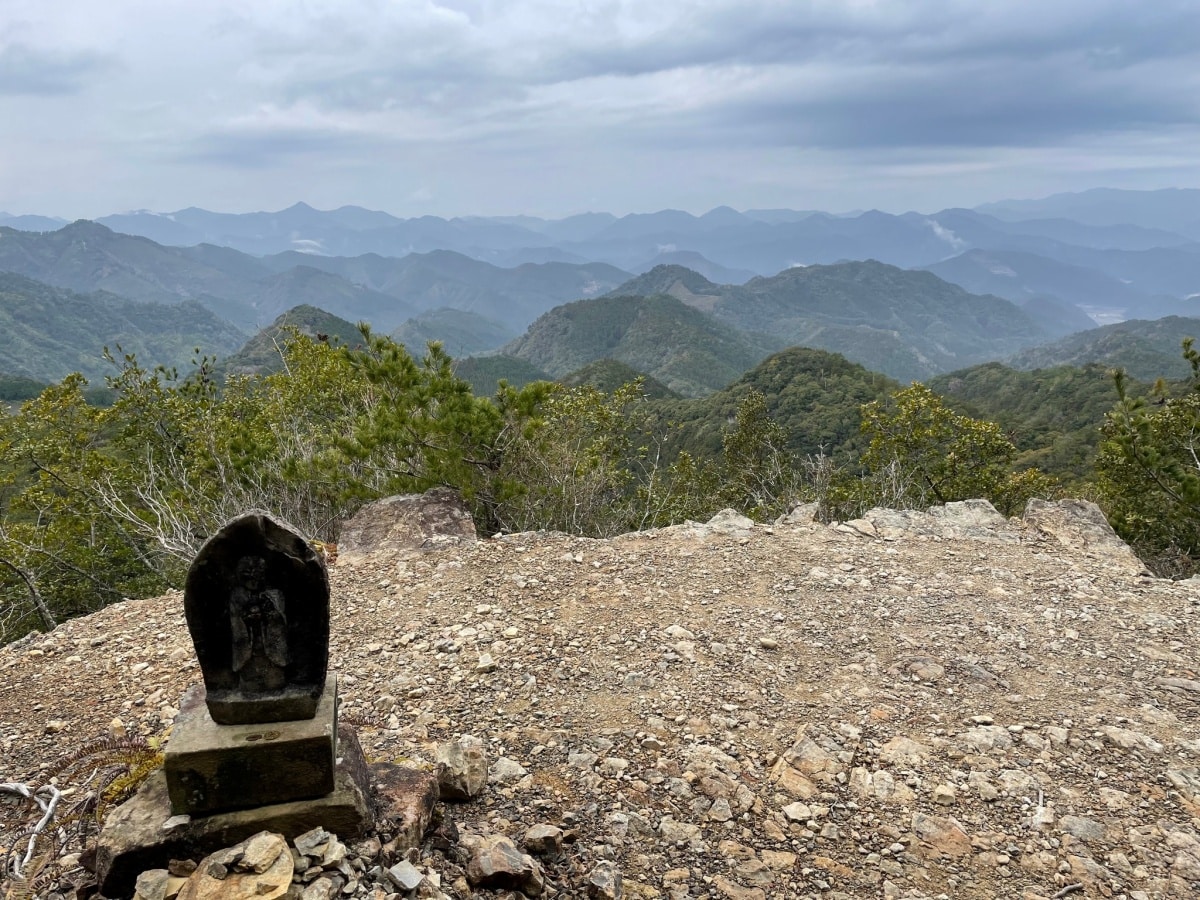
As you won’t be in any hurry to reach Koguchi on this shorter day, take your time admiring the view from Hyakken-gura Lookout.
Your legs will be relieved that this is the shortest full day on the trail, with a hike of 13 kilometers and 670 meters of elevation gain. You can catch a direct morning bus (just over 10 minutes) from Yunomine Onsen to the Ukegawa trailhead. Known as the Kogumotori-goe, this section offers a lovely walk through deep forest and includes one of the most dramatic viewpoints on the whole Nakahechi. Hyakken-gura Lookout offers a fabulous view of the Kii Mountains, or as a local expression claims, the “3600 peaks of Kumano.”
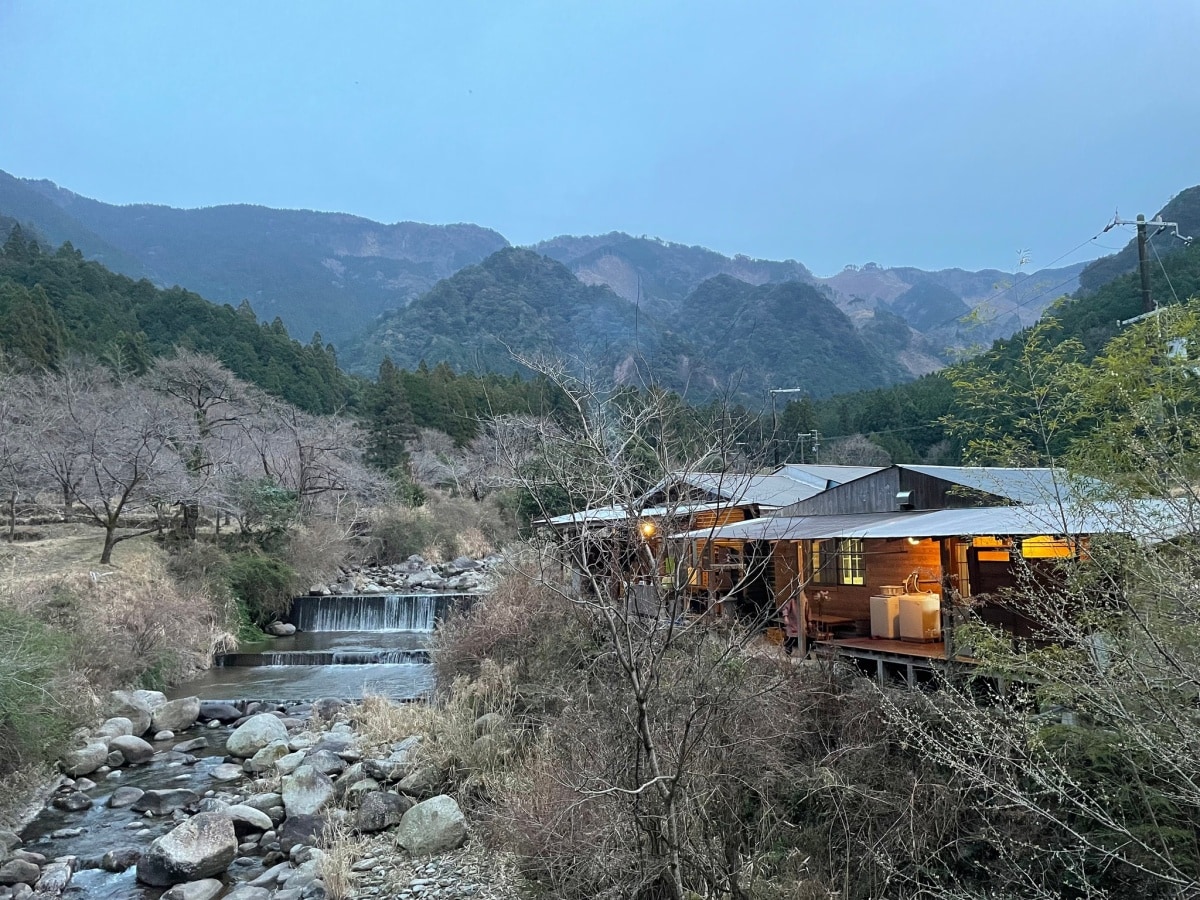
The approach to Kumaano Farm & Guesthouse, located along the river just outside of Koguchi.
Koguchi has one of the more unique accommodation options on the Nakahechi with Koguchi Shizen-no-Ie, a former junior high school renovated into a lodge. Another fantastic option is Kumaano Farm & Guesthouse, featuring meals with local organic vegetables. Wherever you stay, be sure to get a good rest and rise early for the challenging climb that awaits on the final day.
Day 5: Koguchi to Nachisan
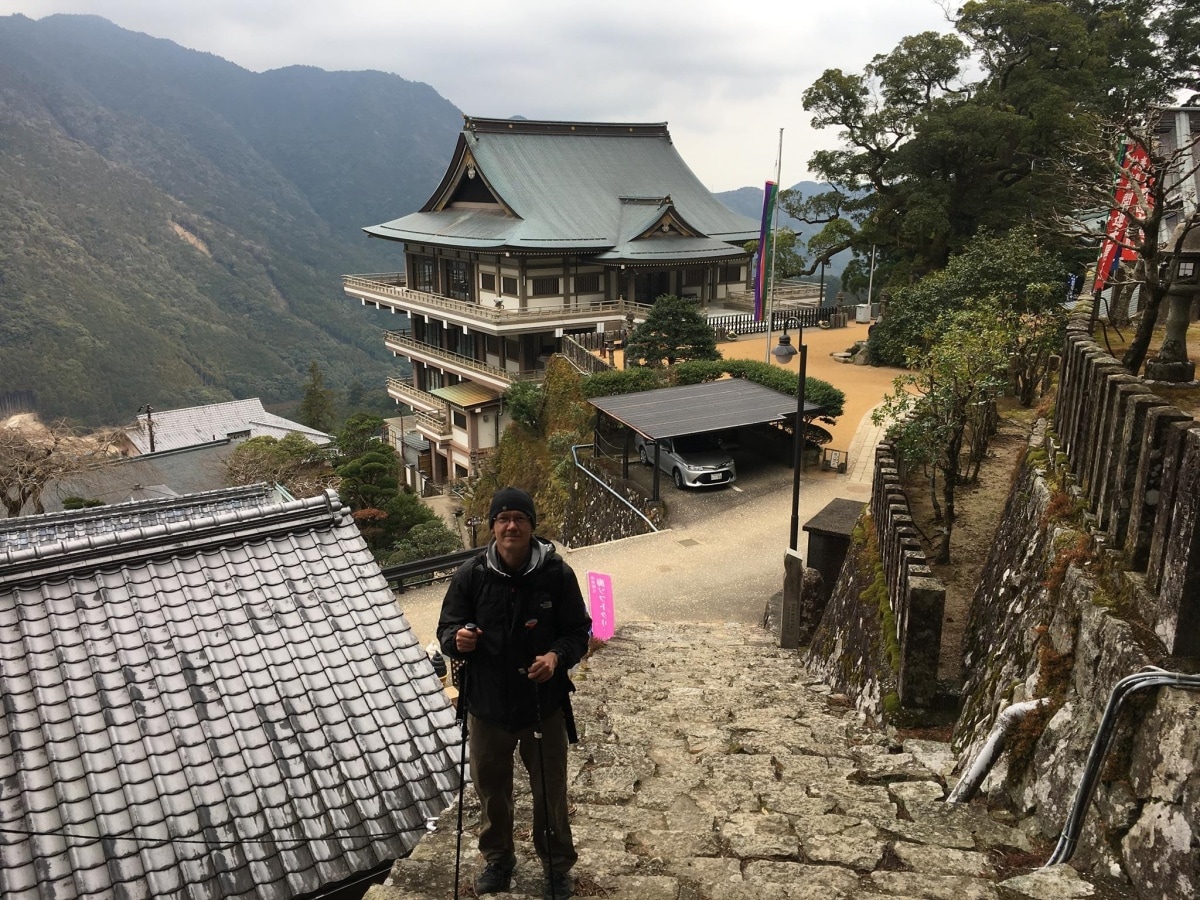
Pilgrimage accomplished. Kumano Nachi Taisha awaits you at the culmination of the Nakahechi course.
At 14 kilometers, the final day’s walk is not as long as the route on the third day, but it is a strenuous hike involving 1260 meters of elevation gain. The Ogumotori-goe section starts with a punishing but tranquil climb through serene forest on cobblestone steps. Although the day’s climbing isn’t finished yet, you may want to hug the sign for the Echizen-toge (at 870 meters, the highest point on the Nakahechi course), as you will know the hardest ascent is behind you. After days of hiking through the forest, you will be surprisingly rewarded (weather permitting) with views of the Pacific Ocean later in the day.
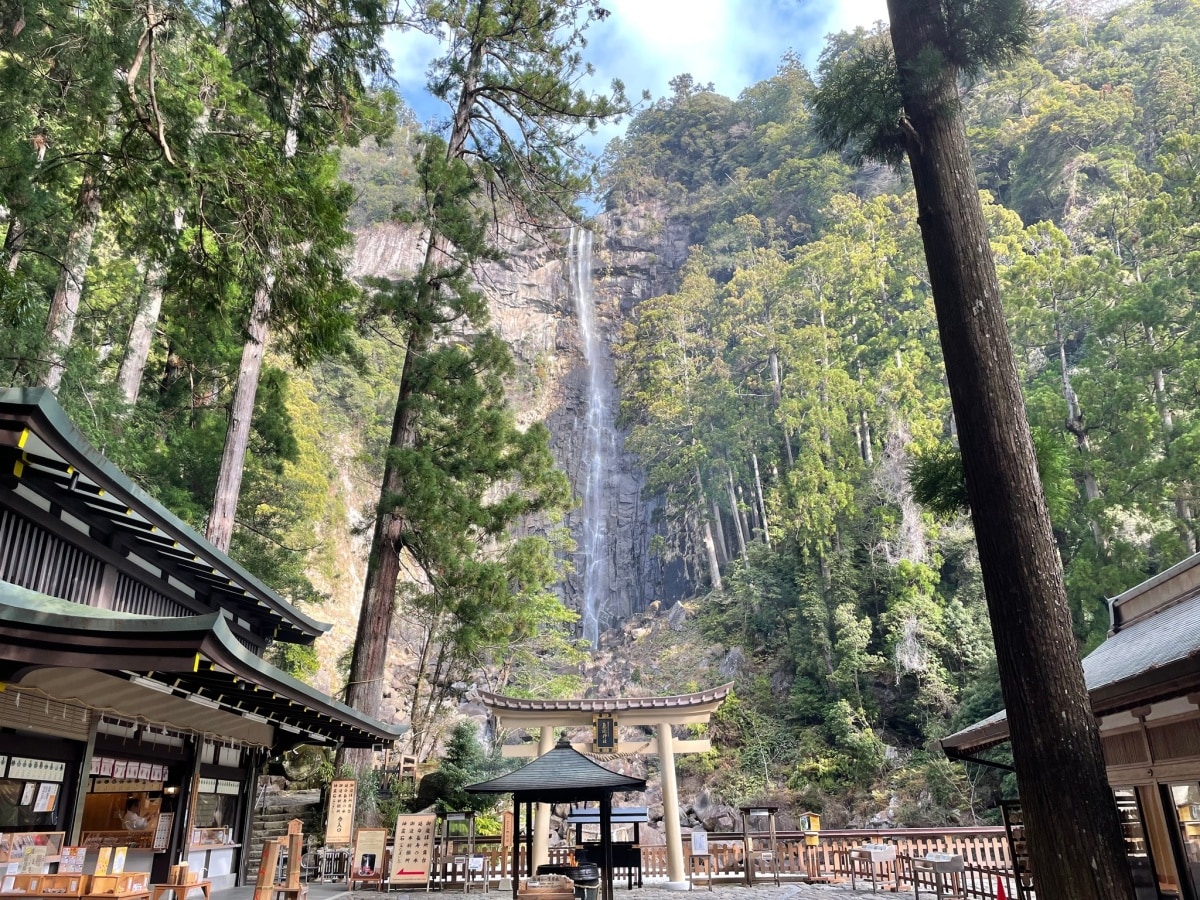
Japan’s tallest single-tiered waterfall is another feature of Nachisan.
As on the third day, the hike ends in dramatic fashion, as you step off the stairs and directly into the sacred shrine-temple complex of Nachisan. Give yourself at least a couple of hours to explore Nachisan as, in addition to the grand shrine, it is also just a short walk to Nachi Falls. At 133 meters, it is Japan’s tallest uninterrupted drop waterfall. The three-storied pagoda at Seiganto-ji Temple with Nachi Falls in the background is one of the most picturesque scenes in all of Japan.
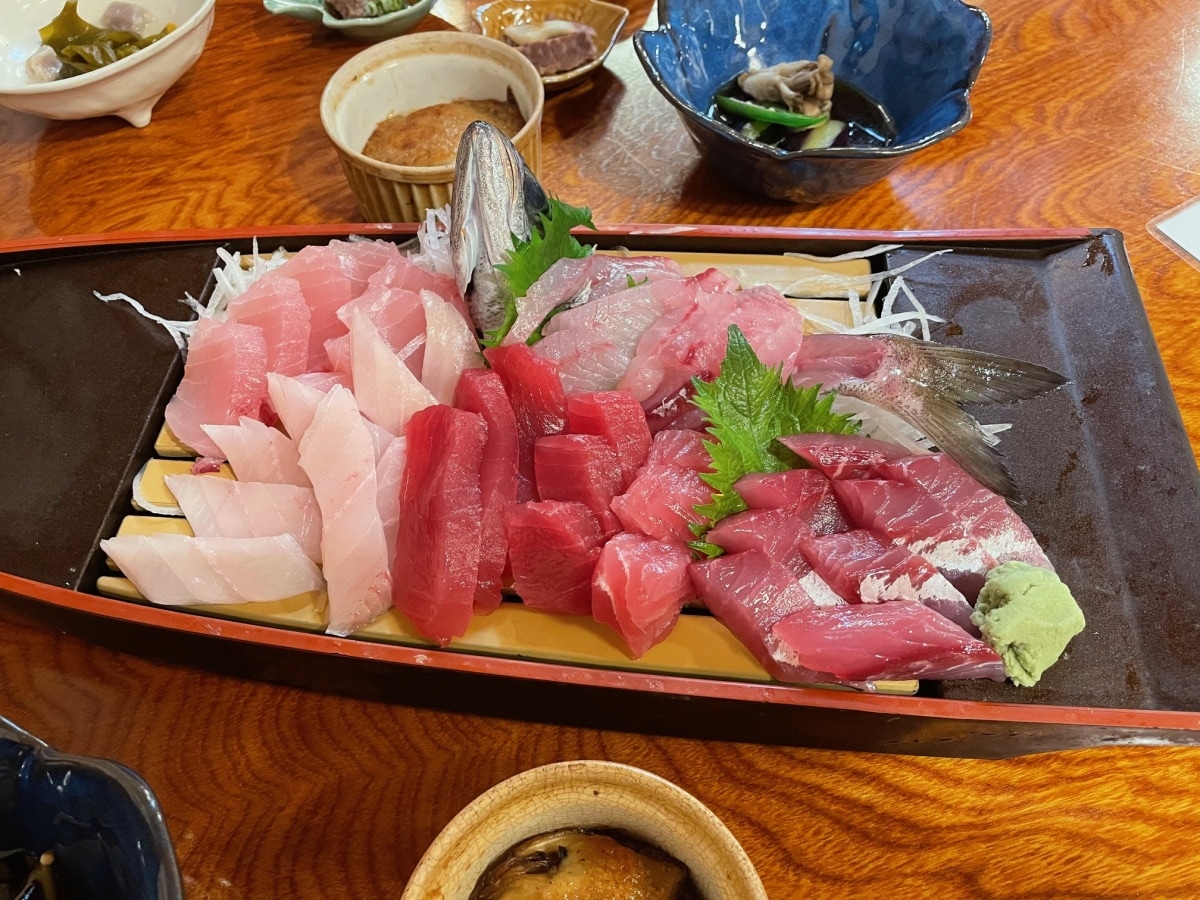
A bounty of super fresh sashimi at Minshuku Wakatake is another great end-of-trek reward.
If you want more time to appreciate the mountaintop sanctuary of Nachisan, there is one inn. Otherwise, the seaside town of Nachi-Katsuura, just a 30-minute bus ride down the mountain, offers a wide selection of accommodation options. As Nachi-Katsuura is home to the biggest number of hot springs in Wakayama Prefecture and the largest haul of fresh tuna in all of Japan, it is the perfect place to unwind at the end of your pilgrimage.
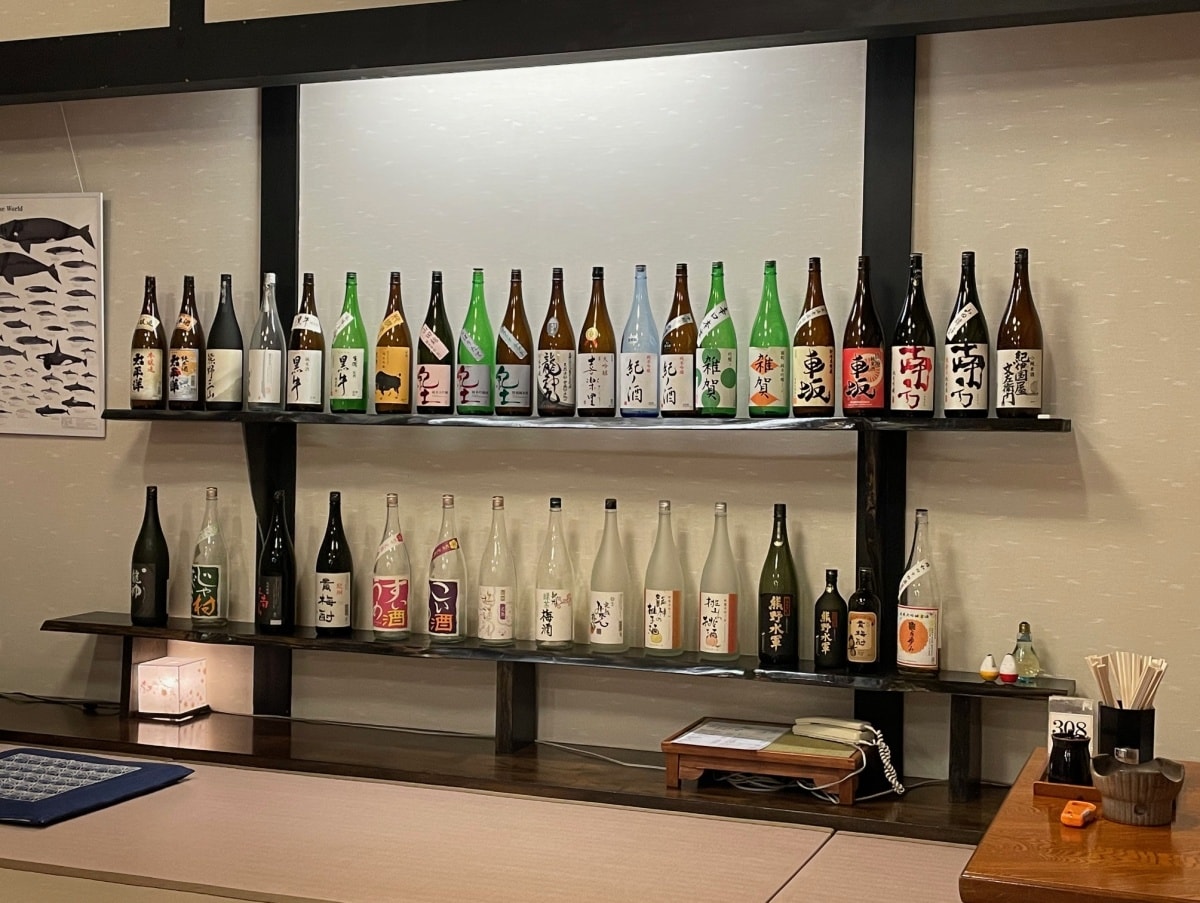
The impressive collection of local sake available at Minshuku Wakatake.
Kumano Nachi Taisha Information
Alternatives
Please note that this Nakahechi itinerary does not include Kumano Hayatama Taisha. For those wishing to visit all three grand shrines, the shrine is a 15-minute walk from JR Shingu Station. Another popular option is a 90-minute boat ride (advance reservations required) down the Kumano River that takes you to the riverbank of Hayatama Taisha.
If you are a less ambitious walker or encounter inclement weather, sections of the Nakahechi can be skipped by using the local bus service. See full details for getting around the Kumano region by bus at the link below.
Kumano River Boat Tour Information
Bus Route Map and Schedule
Accommodation Bookings
Unlike its sister pilgrimage trail in Spain, it is not possible to simply find accommodation along the way on the Kumano Kodo. The best way to secure your bookings is by making use of Kumano Travel, the travel arm of the Tanabe City Kumano Tourism Bureau. Their excellent bilingual website features model itineraries, detailed maps, and descriptions of accommodation options, among other resources.
Due to the increasing popularity of the Kumano Kodo, it is recommended to book accommodations at least six months in advance for the peak seasons of spring and fall. There are also a small number of official campsites along the Nakahechi course, but you will need to carry your own tent. Wild camping is strictly prohibited.
Kumano Travel HP
Camping Information
Kumano Kodo Video Overview (Tanabe City Kumano Tourism Bureau)
Getting There
The gateway to the Nakahechi course is JR Kii-Tanabe Station. It takes slightly over two hours to reach Kii-Tanabe from Osaka on the Kuroshio limited express train. Just in front of the station you can catch your bus to the trailhead at Takijiri.


